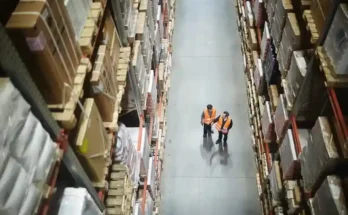What is a cost estimate? In a cost estimate, cost factors are included in the total cost. Cost estimators compute the unit prices by counting single units and multiplying these figures by unit length. Materials such as steel, timber, and piping have a specific unit length, so the value is computed using those exact measurements. The cost estimator will also develop a gross weighted total cost figure.
Indirect Costs are Included in a Cost Estimate.
Indirect costs are those expenses that are not directly related to the construction work. They include administrative costs, transport, and smaller types of equipment. Some of these expenses can be variable, such as design and permit fees. Other indirect costs include bonding, permit, and legal fees. When comparing estimates for takeoff services, indirect costs should be considered. If they are included, they should be reasonably comparable to direct costs.
Estimators will consider the project scope, the resources needed, and the organizational capacity when compiling a cost estimation and quality takeoff services. Overhead costs are determined following the quantity survey application, taking into account other work in progress, the owner’s schedule, and contingencies. After preparing an estimate, the estimator should research possible errors and examine alternative methods of construction.
Using specialized project timeline software to calculate indirect costs is a great way to increase the efficiency of your material takeoff services. You can expect your team to be accurate and on time if you hire a qualified material takeoff company. They should be able to run the software and other programs and have the appropriate training to do the job. Quality takeoff services should include all of these costs.
Quantity takeoffs are essential for the budgeting and scoping process. Quality takeoff services from Priest are known for their accuracy and detail. By combining digital and manual methods, our cost estimators can leverage emerging technology to streamline the cost estimation process. This will save you time and money and reduce the chances of rework. Furthermore, digital takeoff models will help you avoid speed bumps and rework that can cause costly errors.
Documentation is Recommended to Accompany a Cost Estimate.
Quantity takeoffs are necessary to ensure that you are on the right track financially and in terms of scope. The accuracy of digital launches can vary significantly depending on the quality of the drawings used to produce them. A digital takeoff is faster and requires less labour, which is essential for project owners who need to reduce costs. Digital takeoffs are also more accurate than manual takeoffs, and their use can help you save time and money by avoiding rework and speed bumps.
A reasonable cost estimate must be accompanied by detailed documentation that details how the forecast was generated and the funding required for the project. This documentation is typically called the Basis of Estimate. Other documentation may also accompany the forecast, such as quantities taken, supporting calculations, quotes, or other data. It should explain all the data sources used and clearly explain the method used to arrive at the cost estimate.
A construction cost estimating services validates all the previous estimates, and it is most accurate when all costs are known. Many construction professionals no longer estimate by hand and migrate to takeoff applications such as Planswift. By using this software, these professionals significantly reduce their errors and increase the quality of their cost estimates. Documentation is also necessary for the construction project budget, which helps the design team identify cost-saving options.
On-Screen Takeoff Technology is an Advantage Over Manual Takeoffs.
On-screen takeoff software has several advantages over manual takeoff methods. Among the many benefits of on-screen takeoff software is that it reduces the number of physical measurements. Furthermore, on-screen takeoff software allows users to quickly determine the number of materials needed for any job. This means that even the most miniature business owner can perform on-screen takeoffs without the need for expensive tools.
On-screen takeoff software allows for direct takeoffs from digital files. The software is compatible with most CAD files and most common digital image file formats. Contractors can view their design drawings directly on the computer screen with this software. On-screen takeoff software communicates with the digitizer and can calculate dimensions and markups. Its step-by-step guidance makes it easy for the user to measure and quantify the materials needed for a construction project. Additionally, this software can distinguish between new and old data, making it easier for the contractor to compare the two versions of the drawing.
On-screen takeoff software takes up to fifty to seventy percent less time than manual methods. This time savings is significant, particularly on large projects where a single takeoff can take eight hours. And the software’s interface is clean and easy to follow. This means the user can focus on completing the takeoff in a fraction of the time it took with manual methods. That saves time and money for a business.
Another benefit of on-screen takeoff software is its ability to automate the process. In the case of a complex job, collaborating on the project can be a breeze. For instance, taking a project’s cost estimate is essential, and taking off the required measurements is a crucial step for success. On-screen takeoff software automates this process by removing manual steps and ensuring accuracy and speed.
Smartsheet is a Cost of doing business
If you need help managing your projects and planning your next business trip, Smartsheet can help you. Its cloud-based software works on iOS and Android devices. You can create your own sheets and then customize them with templates that include Gantt charts and Project with Hard Deadline. In addition to customizable templates, Smartsheet also has a blog for tips and best practices. Smartsheet works with essential data for a free version, but for more advanced users, there is an Enterprise plan.
In addition to offering an integrated platform for project management and time tracking, Smartsheet is also an excellent option for project portfolio management and workforce planning. With its Bridge feature, you can automate actions like tracking shipments or triggering emails. Smartsheet is an ideal solution for businesses that need a comprehensive view of their project pipeline and workflow. It also works with other business applications such as CRM and 10,000ft, and can be used for budgeting and time tracking.
While Smartsheet is a cost of doing business, it is also worth the money. The Business plan costs $25 per user per month and includes more advanced features. It supports Gantt charts, forms, mobile access, reminders, notifications, and automated workflows. Compared to the Individual plan, this plan is best suited for mid-size and large businesses. It is worth noting that the Individual program will be discontinued in September 2021, and the premium plan will no longer be available.
Another feature of Smartsheet that users love is its ability to share information. You can give viewing access to non-company employees. Furthermore, Smartsheet allows you to provide non-company users access to your project and its data. This feature increases efficiency. Because it is entirely customizable, you can automate several standard processes.




